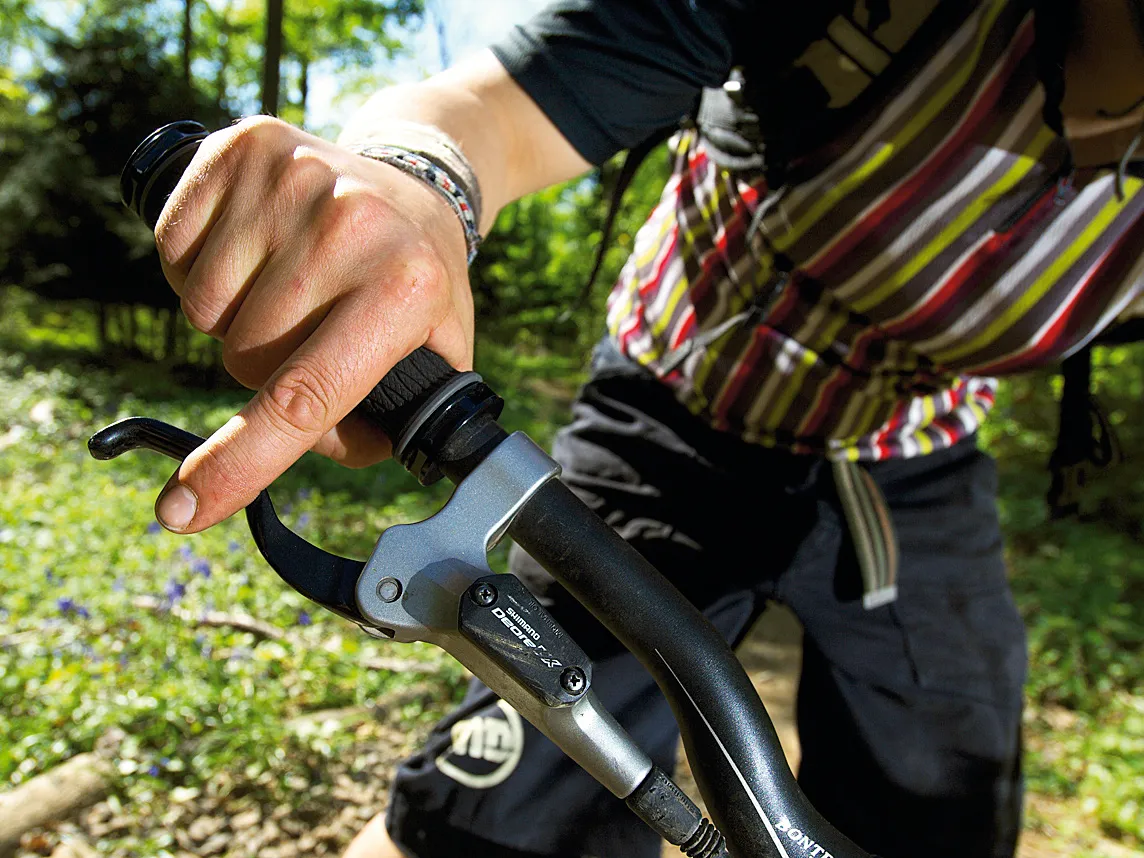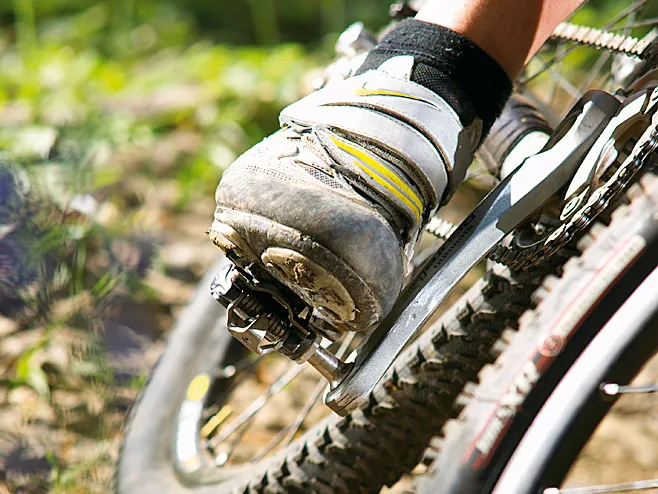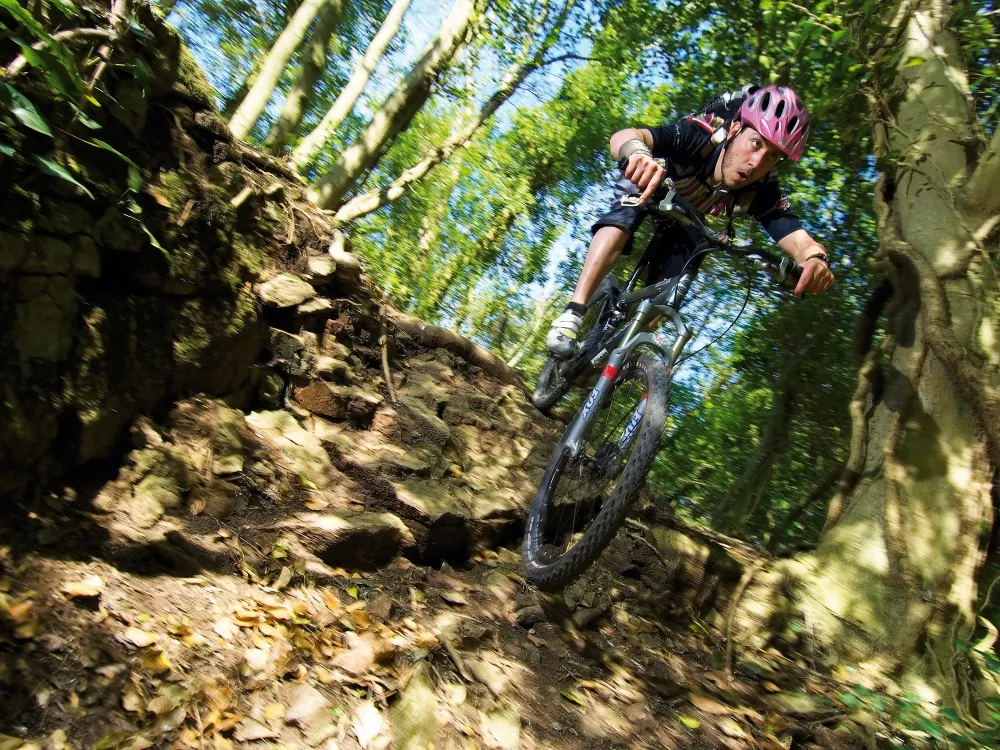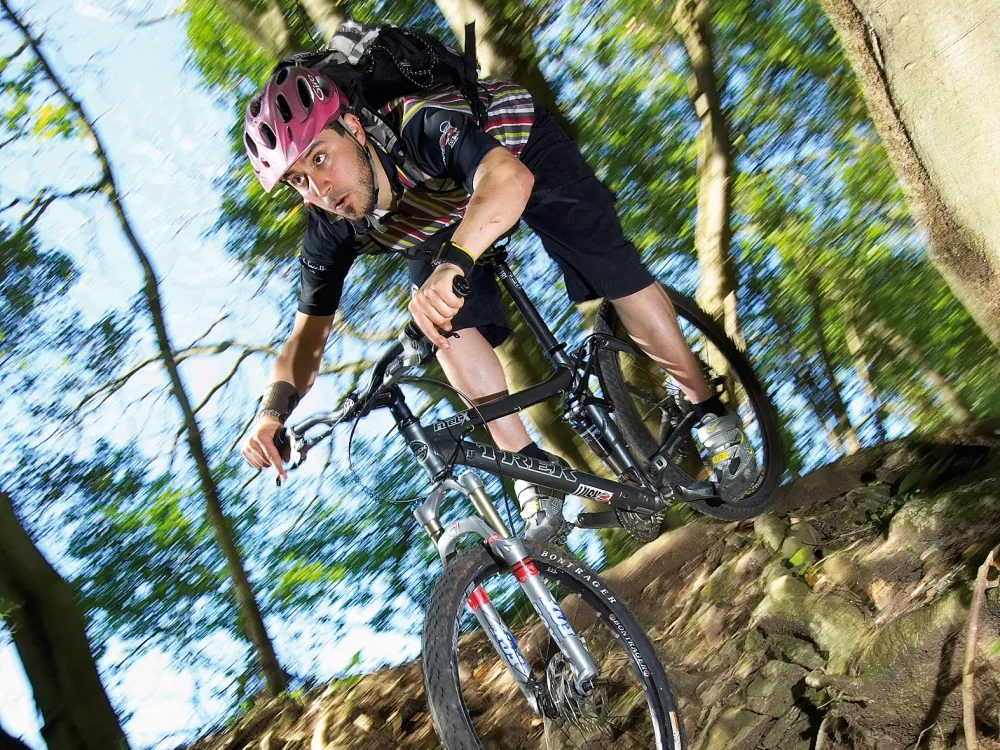In the days before effective suspension, rigid mountain bike riders had to contend with a simple fact of life: the rougher the trail and the higher the speed, the less time their wheels were likely to remain in contact with terra firma.
And less contact meant less control. But with several inches of bump-swallowing suspension keeping tyre treads firmly planted, a rider's options are hugely increased. Here's how to make the best of your full susser's control advantage.
Braking to go faster
Mountain biking isn't just about stomping on the pedals when you want to move forward, and hauling on the anchors when you need to scrub off some speed. Riding trails well - which means riding them with maximum fun in mind, which in turn almost always means as fast as possible - involves a subtle blend of both physical and mental agility. Yes, it's possible to think yourself faster. And one of the ways to do that is to learn how to use your brakes more effectively.
Contrary to what most small children are taught by their parents before their first solo wobble down the road, your front brake is your best friend. The faster you need to slow down, the more work you'll be asking it to do - and, conversely, the less effective your rear brake will be. That's because as you decelerate, your centre of gravity tends to be pitched forward. The less weight there is on the rear wheel, the less it's able to grip and slow you down. So the first rule is, use your front brake more. But push your weight back at the same time of course, you don't want to spoon straight over the bars. Also, if your rear tyre's skidding, you're not doing it properly.
Second, learn to read the trail ahead so that you can anticipate where you'll need to reduce speed. Knowing in advance where you'll be braking means you'll always have a plan for the next few seconds of riding, which in turn makes it easier to always find yourself in the right gear and riding at a speed you can control. Rather than reacting to events as they unfold, which can often be too late. It's both faster and less likely to end in an embarrassing faceplant into the weeds.
Finally, use your gears and brakes together to keep everything as smooth as possible. With Shimano Dual Control levers you can brake and change up/down in one swift motion. Feather your brake control, even when you're braking hard, so that your chances of losing traction are reduced: squeeze the brake levers on and off rather than grabbing them. And shift ahead of time, so that you're not fumbling for the right gear coming out of a tricky corner or going into a steep, technical climb. Done right, it should all become a seamless flow of forward progress down the trail, rather than a series of sudden changes of speed.
Low speed control
There are all kinds of situations where you may want to hold your bike's speed in check, but one of the trickiest to negotiate is short, steep descents. Full suss can give you the confidence to tackle drops that'll have most hardtail users off and walking, whether it's the gradient, a bunch of rocks or a tangle of roots that's in the way. And because the suspension will help the wheels stick to whatever they're rolling over, you've got the chance to control your bike's speed. Remember that 'front brake is your best friend' rule? Well, it applies here too - only more so.
As the gradient increases and the bike pitches forward, your rear brake becomes progressively less effective, to the point where it's barely worth using. There's nothing you can do about this, except to lay off as much as possible. A locked and sliding rear wheel won't help you. But a carefully controlled front wheel can hold your speed down, giving you time to check your exit options, make any small direction changes that might be necessary, and generally take back control.
The key is to use the front brake up to - but not beyond - the limits of your front tyre's grip. Why? Well, a locked front wheel on a steep drop will slide where it wants, and may well take the rider for a close-up view of the ground in the process. If your front wheel begins to slide, ease off the pressure on the brake very slightly but quickly, so that it can grip and roll again. It's good to practice this technique on a steep but smooth and dry drop, so that you can get a feel for your tyre's limits. Different surfaces and trail conditions will, of course, have a big impact on how effectively your front brake can slow you down - wet, greasy rocks are best tackled brakeless, for example, whereas dry, hardpacked dirt can usually be ridden slower than walking pace.
Steering the right way
Everyone knows that you steer a bike by turning the handlebars, right? Well no, actually. Except at extremely low speeds, the only result of turning the bars one way or the other is likely to be a sudden and close inspection of the local flora. At normal riding speeds you turn by leaning to one side or the other. Sounds odd? That's because it's instinctive. Once you can ride a bike, you can steer it - it just happens. But steering to go faster means paying a bit more attention to what's happening, and giving your bike a helping hand when needed. The faster you can ride through a corner, the less you'll have to rely on braking and the quicker you'll surge forward.
There are two main obstaclesto maintaining your straight-line speed through a corner. The first is that a leaning bike can sometimes result in an inboard pedal catching on trail side obstacles. And the second? Tyres can struggle to grip as the rider's centre of gravity moves away from their contact patch. A sliding rear wheel can often be caught in time, but a front wheel washout is usually sudden - and painful.
Luckily, there's a simple solution that solves both problems. Instead of cornering with your pedals level, drop the outside one and put as much of your weight as possible on that foot. Back this up by keeping your body upright and centred over the bike while you tilt the bike into the corner, and you'll increase the inside pedal's ground clearance and put more of your weight over the tyres, which will help keep them gripping and rolling instead of sliding sideways. If you're not saving brake pad wear and exiting corners a gear higher than usual using this technique, chances are you're not trying hard enough...
Weight, there's more
A common theme to many riding skills is using your weight to persuade the bike to do what you want it to do - or at the very least, to do it faster than usual. There's a reason for this. Bicycles are unique in the vehicular world for having an engine - that's you, in case you were wondering - that's both moveable and has a weight several times greater than the chassis to which it's attached. To put that into some perspective, imagine if your car's engine weighed at least four times the rest of the car and shifted around as you drive. It would drastically alter the way your car handled.
The upside to this top-heavy situation is that you have a great deal of control on tap, simply by virtue of shifting your body weight a few inches one way or the other. Need more traction on a steep climb? Shift back on the saddle an inch or so and drop your arms to prevent the front wheel from lifting. Want to avoid pitching over the front on a steep drop? Shove your weight as far back over the rear wheel as you can. Need some extra power on a long climb? Stand out of the saddle and supplement muscle power with some help from your body's mass, 'dancing' on the pedals as you rock the bike from side to side.
You get the idea. The bike is a tool - and you're in charge. Want to assert your authority? Take control by using your weight.
Top tips for suspension superstardom
- Increase your confidence in your front brake - and reduce your tendency to lock up the rear wheel - by laying off the rear brake altogether. Not convinced? Just keep your weight back and experiment with stopping using the front brake alone.
- Get more grip by lowering your tyre pressures. Letting just a little air out of your tyres will get you up steeper climbs and down scarier drops with more control, although at the risk of a greater likelihood of punctures.
- By bending your outside elbow and straightening the inside one, you'll help accentuate the bike's lean as well as put more weight over the front wheel and push your weight to a more upright position.
- Find the limits of your weight shifts by practising wheelies and front wheel endos, preferably somewhere flat and with a soft landing. Once you can confidently find the balance points for both, you'll find it easier to use your weight out on any tougher trails.




